|
|
|
|
|
|
|
|
|
News from the EU
|

|
|
Counter-Terrorism Agenda for the EU: Anticipate, Prevent, Protect, Respond
|
|
The European Commission adopted today, 9 December 2020, a Counter-Terrorism Agenda for the EU. In the face of recurring terrorist attacks across Europe, the Security Union must be reinforced by a resolute action at EU level to fight terrorism and serious crime.
|
|
|

|
|
The European Commission adopted today, 9 December 2020, a Counter-Terrorism Agenda for the EU. In the face of recurring terrorist attacks across Europe, the Security Union must be reinforced by a resolute action at EU level to fight terrorism and serious crime. You can find answers to questions related to the background and objectives of the document here. The Agenda sets the way forward for actions to counter terrorism at EU level, looking at better anticipating, preventing, protecting and responding to the terrorist threat. A brief factsheet provides a snapshot of the main topics the Agenda puts forward. 
|

|
|
|
|

|

|
|
Call for Applications: Performance requirements for threat detection equipment used to protect public spaces
|
|
The European Commission is launching a technical working group to support a voluntary scheme for performance requirements of detection equipment used in public spaces outside areas where aviation standards apply.
|
|
|

|
|
Threat detection equipment is used in a wide range of sectors, including – but not limited to – law enforcement, border security, customs, post services, transport, prisons, government buildings and large sports / entertainment events. Despite the enormous market, however, there are no harmonised European performance requirements or test methods for detection equipment outside the areas where aviation standards apply. The lack of harmonized performance requirements is a cause of unknown and varying efficacy of the equipment used across the EU. The European Commission is launching a technical working group to address this shortcoming. This group will support a voluntary scheme for performance requirements of detection equipment used in public spaces outside areas where aviation standards apply. The group will implement, through 2020 and 2021, the practical steps towards defining harmonised performance requirements of the detection equipment and related verification mechanisms. The voluntary scheme will be open to all interested manufacturers of detection equipment who are willing to test the equipment they make available in the EU against an agreed level of performance. Ultimately, the Commission wishes that a large majority of the detection manufacturers will participate in this scheme, thus raising the bar across the sector. The voluntary scheme will contribute to the protection of public spaces and to the wider efforts to improve the detection and prevention of chemical, biological, radiological, nuclear and explosives incidents. It will in particular help the operators of public spaces that are considering the use of detection equipment to identify the appropriate equipment. At the same time, it will bring more clarity for industry about the threats that their equipment should be able to detect. The Commission has prepared draft Rules of Procedure and draft Terms of Reference for the new technical working group. These documents will be discussed and adopted at the kick off meeting on 10 december 2020. The call for applications for the selection of members of the technical working group is permanently open, so feel free to apply even if you could not attend the kick-off meeting.
|

|
|

|

|
|
Present your protection of public spaces project – get published in the Security by Design book!
|
|
Would you like to tell us what you know about the concept of security by design? Would you like to share your experience with us? We can use your project as a case study in the forthcoming virtual book on Security by Design for the Protection of Public Spaces from Terrorist Attacks.
Take a few minutes to fill in this survey and share your experience with us:
https://ec.europa.eu/eusurvey/runner/SecurityByDesignBook
|
|
|

|
|

The European Commission intends to publish a book on urban design for security. As more and more cities are facing terrorist attacks targeting public spaces, security needs are to be aligned with aesthetics. We would like to promote the concept of security by design - addressing security concerns and providing physical solutions from the very beginning of the planning and design or renovation of a public space or building. The book will provide hands-on examples and cross-discipline approaches to the prevention of terrorist attacks through the design of public spaces in the European context and will serve as a reference material for urban planners and authorities. Take a few minutes to fill in this survey and share your experience with us: https://ec.europa.eu/eusurvey/runner/SecurityByDesignBook
|

|
|

|

|
|
Debriefing from the EU Law enforcement fora
|
|
The EU law enforcement fora have been very active in the last quarter of 2020. The EU Law Enforcement Practitioners Forum, the chairs of European law enforcement networks supported by the Commission as well as RAILPOL have been hard at work. Find out about recent developments here.
|
|
|

|
|
The 5th EU Law Enforcement Practitioners forum organized by the Commission took place on 14 October 2020. It gathered more than 60 participants from EU Member States. A special guest to the Forum was the Chief of Staff of the Joint Program Office for Countering IEDs at the US Federal Bureau of Investigation (FBI). He presented the topics trending within US law enforcement fora regarding explosive threats and threats against public spaces. The presentation included a policy update which showed the legal framework and actions mandated by the senior US policy leadership. COVID-19-related developments were discussed together with an overview of explosive devices based on the legal/illegal fireworks and how these have been used/plotted in different areas in the United States, including in attacks against law enforcement officials during public demonstrations. Following the latest terrorist attacks across Europe and in view of the upcoming EU Counter-Terrorism agenda, the Commission organised a first meeting bringing together the Chairs of the various law enforcement networks related to counter terrorism which are supported by DG HOME. 14 Chair-level representatives from 8 law enforcement networks (AIRPOL, AQUAPOL, ATLAS, EU IFSO-EU Inflight Security Officers, ENLETS, ESG-European Surveillance Group, HRSN-High Risk Security Network), RAILPOL) and EUROPOL/ECTC attended. The discussions revolved around developing synergies in the area of counter terrorism and how the EU framework can better enable police cooperation in view of the current and future counter-terrorism challenges. 
RAILPOL held its 4th Rail Action Week (RAW) from 7 to 14 September 2020 with the aim of enhancing the level of safety and security of the European railway system. During the Rail Action Week, about 24,000 police officers and more than 4,300 other partners from railway and security agencies conducted more than 4,000 checks of critical infrastructures, 10,000 railway crossings and 160 trains carrying dangerous goods. 643 public-relations activities were carried out to raise awareness about the risks and the recommended safe behaviour in the rail environment.
|

|
|

|

|
|
Debriefing from the Second Meeting on Use of Generic Numerical Models for Testing of Vehicle Barriers
|
|
The workshop focused on discussing challenges, opportunities and ideas about potential ways forward in developing harmonized generic models for use across the EU.
|
|
|

|
|
The European Commission is working towards the definition of generic numerical models to be used for the performance assessment of vehicle security barriers through numerical simulations. A first workshop of interested stakeholders took place in June 2020 and was followed up by a second one in November 2020. While the focus of the first workshop was to give the floor to the participants to share their experiences with such models, the second workshop focused on discussing challenges, opportunities and ideas about potential ways forward in developing harmonized generic models for use across the EU. Technical Challenges A big part of the discussion revolved around the numerous technical challenges in simulating numerically the behaviour of barriers loaded by vehicle ramming. The vehicle penetration distance is difficult to model as there are many unknown variables: for example, an unknown amount of energy gets absorbed by parts of the vehicle or the barrier, depending on the height of the front of the vehicle, it may bend over the bollard; the way the internal parts of the vehicle are aligned or the symmetry of the motor block affect the impact choreography. The interaction between the soil and the foundation of the barrier is not static and dynamic material models have to take into account not only the properties of the soil but also the rotation of the foundation. It is important to have a detailed model of the barrier that is being tested. Purpose of numerical modelling Given these limitations, it was agreed that numerical simulations can support the development of barriers without substituting physical testing. As physical testing is expensive, it is seldom repeated for different scenarios. Numerical testing can complement the physical test by adding scenarios and loading types. Additionally, numerical simulations can be instrumental for the conceptual design of barriers. A numerical model must not be used as the single source for the approval or certification of barriers. Definition of the requirements of the models The workshop participants agreed that a model which is to be used to support the physical testing of barriers has to be a three-in-one modelling tool, where the interaction between vehicle, barrier and soil can be simulated and verified. It will have to be usable by different codes. It is very important to declare the purpose and limitations of any model. It must be accompanied by a detailed user-guidance document and a clear statement on the limitations of the model. Further Steps The Joint Research Centre of the European Commission will further investigate potential ways to develop generic vehicle models and will present the findings in a third workshop that will be organized in January next year. If you are interested in this topic and would like to get in touch with us please write to JRC-PUBLIC-SPACES@ec.europa.eu
|

|
|

|

|
|
Debriefing from the EU Digital Autumn School on the Protection of Public Spaces
|
|
The EU Digital Autumn School on the Protection of Public Spaces was successfully concluded. Tell us what topics you would like us to address next time!
|
|
|

|
|
The European Commission held the EU Digital Autumn School which took place over 5 weekly two-hour sessions from 1 October until 4 November 2020. There were 210 registered participants from 29 EU and non-EU countries coming from research instructions, urban administrations, public bodies, law enforcement agencies and private operators. The workshops covered a broad spectrum of topics related to the protection of public spaces: - EU framework for the protection of public spaces
- Blast protection
- Vehicle ramming protection
- UAS (drone) threat mitigation
- Surveillance
- Individual rights and security measures
- Detection
- Crisis management
The Autumn School provided a forum to disseminate scientifically based knowledge, to share best practices and to discuss relevant topics for the enhanced protection of public spaces across the EU. Encouraged by the very positive feedback from the participants, we intend to organize another school in 2021. Follow up this newsletter to receive updates. Tell us what topics you would like us to address next time! JRC-PUBLIC-SPACES@ec.europa.eu
|

|
|
|
|
|
|
Focus
|

|
|
Protection of Places of Worship
|
|
Attacks on people exercising their fundamental right to freedom of thought, conscience and religion in churches, mosques, synagogues and other places of worship continue to occur with dreadful consistency across Europe. Nice, Paris, Hanau, Bayonne, Copenhagen, Baerum, Rouen and Halle are the most recent additions to the increasing list of terrorist attacks on places of worship. This article looks into the aspects that need to be considered when planning the physical protection scheme of places of worship.
|
| |
|

|
|
The freedom of thought, conscience and religion is a fundamental human right tenaciously protected in the EU by legal instruments at the level of international [1], European [2] and individual member state law. Yet, attacks on people exercising this very right in churches, mosques, synagogues and other places of worship continue to occur with dreadful consistency across Europe. Nice, Paris, Hanau, Bayonne, Copenhagen, Baerum, Rouen and Halle are the most recent additions to the increasing list of terrorist attacks on places of worship. Anticipating, preventing, protecting and responding to malicious acts of religious intolerance and violent radicalization requires multi-disciplinary and multi-stakeholder efforts, which affect and are affected by the whole of society. This article is about the physical protection of places of worship. When all else fails to foil a terrorist attack, it is the presence of physical protection measures which remain as a last resort to save lives and mitigate consequences. The term “place of worship” refers to any temple, shrine, site, faith community centre or religious school where worship to any religion is practiced. The basic principles to follow when designing tailor-made protection solutions for a particular place of worship are similar to techniques employed for other public spaces: threat identification and assessment, vulnerability assessment, likelihood evaluation, selection of counter/mitigation measures as well as rehearsal and review of security plans [3]. Nonetheless, places of worship bear particularities, which need to be addressed while analysing and managing the risk of terrorist and extremist attacks. This article looks into these particularities and discusses the aspects that need to be considered when planning the physical protection scheme of places of worship.  Threat identification Threat identification
Across the world and in Europe, incidents of anti-religious attacks are on the rise. The Easter attacks in Sri Lanka in 2019 demonstrated that Daesh’s brand of radical Islamism remains a threat. Violent right wing extremism targeting religious worshippers is another trend that is gaining momentum around the world with attacks like the ones in Christchurch (New Zealand), Pittsburg (USA) and on European soil in Halle (Germany), Baerum (Norway) and London (United Kingdom). The EU Agency for Fundamental Rights reports on persisting trends of anti-Muslim and anti-Semitic sentiments and behaviours across Europe [4]. Discrimination and actual or perceived inequality causes social isolation and breeds radicalization. Europol warns that the negative economic and social impact of the COVID-19 pandemic have the potential to further fuel radicalization across the ideological spectrum [5]. The recent attacks on places of worship have been lone-wolf attacks: radicalized individuals planning and executing an attack single-handedly inspired by previous attacks and propaganda stemming from the same ideology. Europol reports that in the past year the online material inciting lone-actor attacks has significantly proliferated [5]. The weaponry used in the last incidents are firearms, bladed weapons and ramming vehicles. The last EU Terrorism Situation and Trend Report [5] observes that terrorists are increasingly resorting to the use of improvised explosive devices, with triacetone triperoxide (TATP) being the most widespread. Below is a non-exhaustive list of recent terrorist attacks on places of worship in Europe, which exemplifies these trends.  Table 1: Examples of recent attacks on places of worship in Europe Table 1: Examples of recent attacks on places of worship in Europe
The motivations behind attacks on places of worship of the same religion may differ in different parts of Europe. The European Jewish Congress, for example, considers that the threat to synagogues in Eastern Europe is posed mainly by right wing extremism, while in Western Europe it is mostly by Islamist fundamentalism [6]. Threat identification must also be adapted over time taking into consideration changes in the socio-political scene, new technologies and emerging or evolving threats. Threat levels do not apply equally to each and every place of worship in the same area.  Likelihood assessment Likelihood assessment
By their nature, places of worship are powerful symbols and are thus a potential target to extremists whose aim is to send a political message, spread radical ideologies or instil fear. Moreover, being places of spirituality and contemplation designed to promote inclusiveness and a feeling of welcoming and openness, places of worship often are not equipped with security measures, which makes them an easy and attractive target. An assessment of the attractiveness of a place of worship as a possible target to a terrorist attack must include the following considerations: - People attendance: the maximum number of congregating people (both personnel and visitors) at any point in time
- Symbolism: the symbolic value of a place of worship entails its religious significance and its historical, cultural and social/community importance.
- Special event: particular dates, rituals and occasions which carry religious significance
- VIPs: presence of high profile individuals
- Asset size: the space that is occupied by the place of worship
- Existing security measures: security measures that are already present in the place of worship rendering it less attractive in the eyes of potential aggressors
- Accessibility: the openness of the examined place of worship to the public, any reported previous threats (to the asset or the users) and the crime rate in the surrounding area; presence of access control mechanisms and the surrounding urban setup – city centre / sub-urban / out-of-city location, large streets allowing access of vehicles, vicinity to other public spaces / institutions / places of importance
The likelihood of an attack can be estimated by putting together considerations of the attractiveness of the place of worship as a target, the socio-political climate, the security measures in place and the history of prior attacks etc. Specific events, rituals, and symbolic dates would increase the likelihood. The figure below provides an indicator point system for assessing the likelihood of an attack. 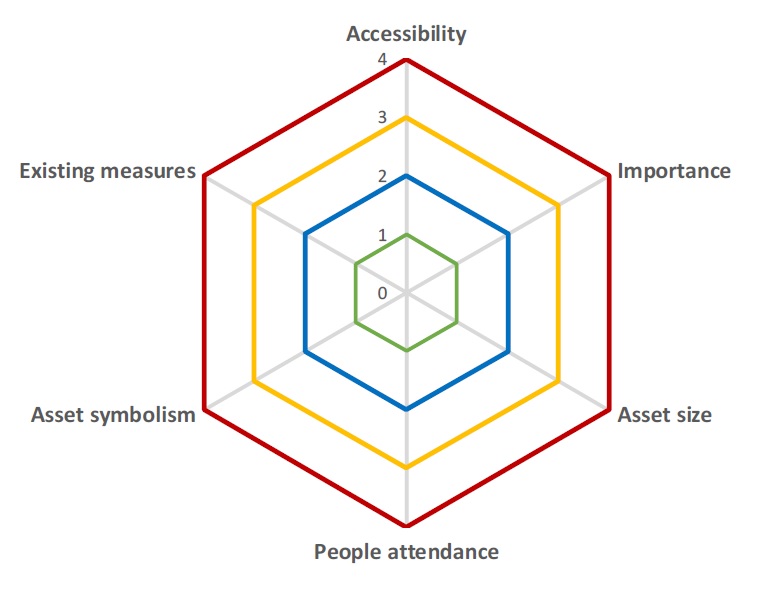
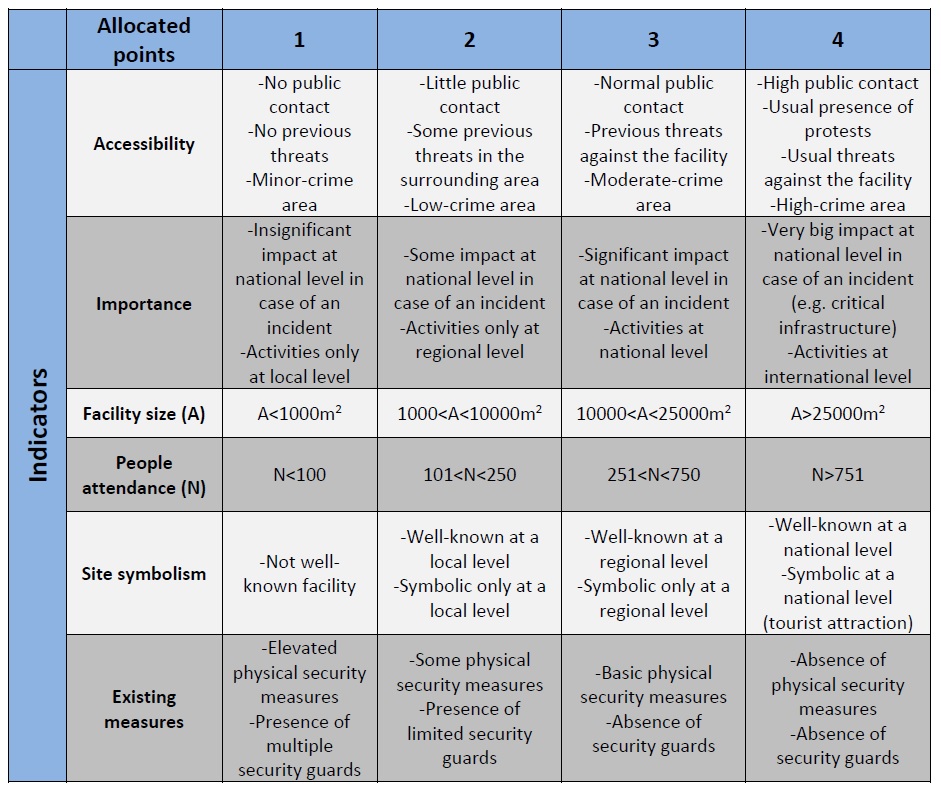
Figure 1: Indicator point system for assessing the likelihood of an attack. Source: Karlos, V, Larcher M (2020): Guideline Building Perimeter Protection. Design recommendations for enhanced security against terrorist attacks. https://ec.europa.eu/jrc/en/publication/guideline-building-perimeter-protection pp. 15-16  Vulnerability assessment Vulnerability assessment
The next component of the risk analysis is the identification of the inherent vulnerabilities of a particular place of worship. Below several considerations are illustrated, which need to be accounted for when performing vulnerability identification/assessment and establishing potential attack scenarios: - Approach routes
- Creation of bottlenecks – conglomeration of vehicles or pedestrians (possibility of explosion or firearm attacks, even drones)
- Presence of alternative access/exit routes
- Surrounding road network and proximity transport infrastructure
- Surrounding urban environment and topography (eg residential area, city centre, public spaces, tall buildings from where a sniper may attack.)
- Traffic volume and type (e.g. access to large/heavy vehicles)
- Parking and transport facilities
- Particularities of the access points (tunnels, shuttles, narrow lanes)
- Location of the parking/transport facilities in respect to the public place (underground, drop-off zones etc.)
Access control - Entry / exit points (presence of alternative access points like emergency exits or side doors)
- Positioning of access controls in a way not causing crowd conglomeration or not shifting the vulnerability to another spot
- Efficiency and effectiveness of access control equipment (dynamic / passive protective barriers, CCTV cameras, scanning equipment)
- Crowd management
- Maximum crowd flow and possibilities for re-channelling
- Presence of shelter from active-shooter/vehicle ramming attacks
- Presence of counter or physical protection measures from UAS (Unmanned Aerial Vehicle) attacks
- Structural resilience
- Possibility of fragment creation or partial\progressive collapse after an IED attack
- Cascading structural effects on adjacent structures
- Safeguards
- Presence of security officials
- Controlled access (personnel, visitors, vehicles)
- Establishment of screening procedure for eliminating insider threats
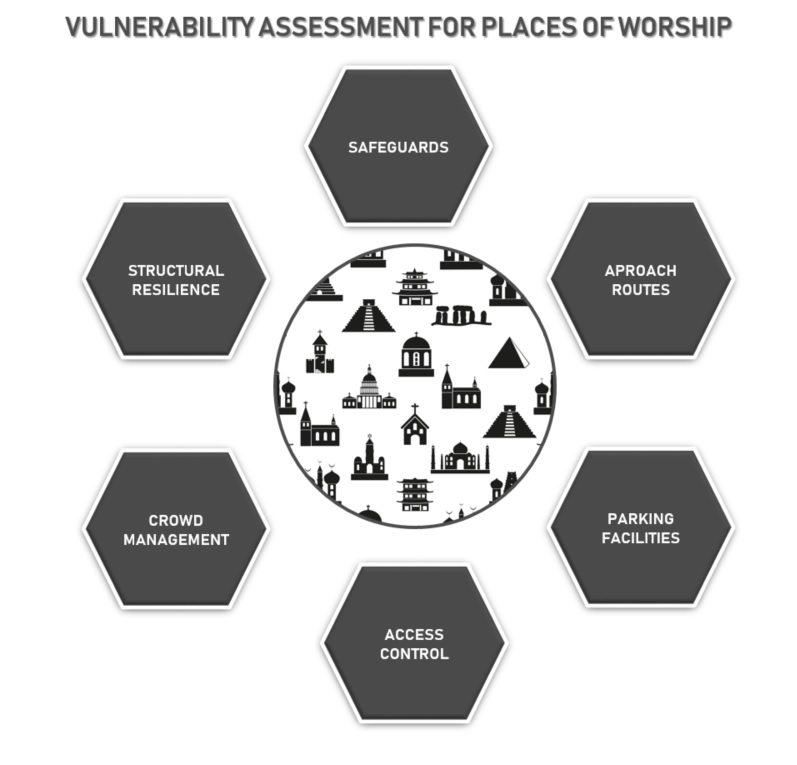
Figure 2: Vulnerability assessment considerations for places of worship Another important aspect of the risk analysis are the potential consequences of an attack on a place of worship. Loss of human life, physical damage, damage to religious artefacts with high symbolic, cultural and artistic value are the immediate consequences. In the longer term, terrorist attacks on places of worship might cause lasting psychological traumas and disruptions in the functioning of the religious community. Indirect consequences include effects on the economy, such as repair costs and the impact on the tourism industry, as well as socio-psychological effects on the whole of society. A thorough risk analysis considering various attack scenarios and different threats provides for an informed decision on the risk appetite - the risk we are ready to accept. Because in practice zero risk does not exist. The aim is to select proportionate protective solutions – solutions which do not impinge on the very nature and purpose of the place of worship and which correspond to the level of risk.  Protection measures Protection measures
Protection measures should ideally be tailor made and well integrated within the design and architecture of the place of worship in order not to interfere with the feeling of contemplation and spirituality it aims to evoke. Often places of worship are considered sites of cultural heritage, so structural interventions or installations of security measures may be subject to approvals by religious or government authorities, which makes the selection a delicate and complicated procedure. The adopted protection measures and security plans need to be revised and updated over time according to the site-specific threat assessment and risk analysis. Effective protection measures do not have to be expensive, in-your-face declarations of fear. Often, it is the simple solutions that make the difference. In the attack on the Halle synagogue, for example, the hardened entrance door successfully hindered the attack as the perpetrator could not enter at the building’s interior and the security cameras in combination with the panic button ensured the fast response of the authorities and the interception of the attack [7]. Panic button systems can significantly shorten the time required for alerting law enforcement authorities in the case of an attack. Bollards or other vehicle barriers strategically placed at the external perimeter of the building may successfully intercept vehicle-ramming attacks and enforce an increased standoff distance. Security measures must be regularly inspected and maintained to ensure their proper functioning and guarantee a performance level that is in line with their initial design. Having a reinforced door installed is good, but having a key handily kept at a known location to be able to lock the door quickly in the case of a perceived attack is even better. The table below provides a non-exhaustive list of relatively simple protection measures, which can be highly effective if installed and maintained properly. 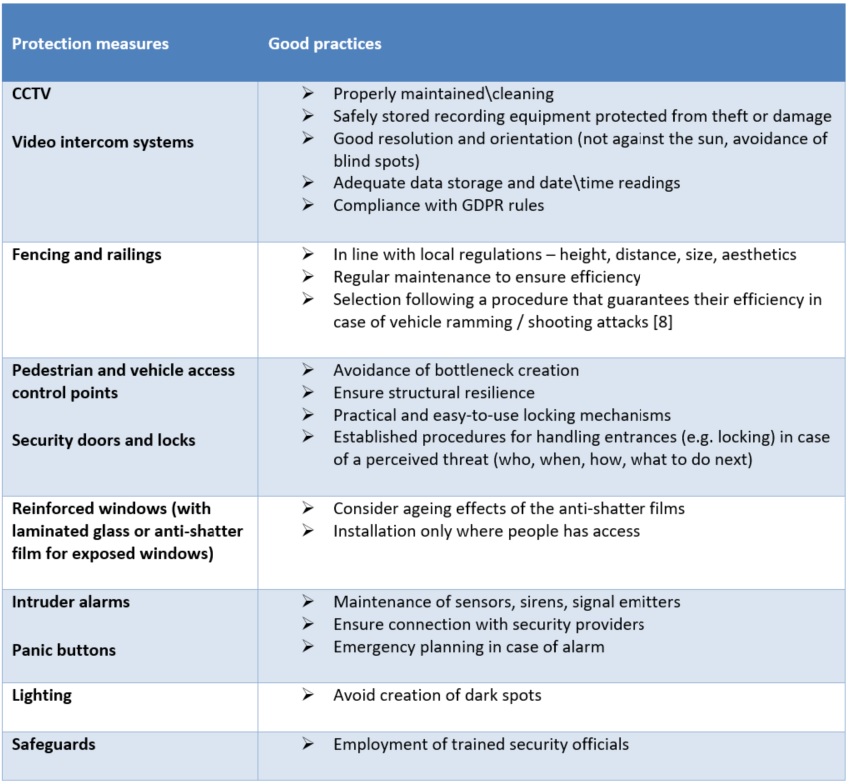 Table 2: Good practices for the installation and maintenance of common protection measures Table 2: Good practices for the installation and maintenance of common protection measures
 Communication and collaboration Communication and collaboration
Of fundamental importance for the security of places of worship is the communication and good relationship between public authorities, law enforcement agencies and religious institutions and faith community leaders. Faith community leaders must be kept informed about the levels and types of threat, while law-enforcement agencies must be notified about special events or whenever there is a need for increased protection. The United Nations has come up with a plan of action to safeguard religious sites [9], which recommends that places of worship are mentioned as vulnerable places in the national security strategies of member states with established procedures and well-defined roles among actors for early-warning systems, emergency response, crisis management, security, and resilience. Security plans are to be developed in collaboration among religious leaders and security operators or law enforcement agencies. Training practice on how to react in case of an attack, including evacuation plans, may help for a swifter reaction and save human lives. Awareness-raising is another imperative factor in the protection of places of worship. Religious communities must be informed on ways to detect threats, report suspicious behaviour, notice signs of potential attacks and know how to respond. Schemes like “See Something, Say Something” or “Run-Hide-Tell” provide the wider community with a straightforward message for a ready response in case of an incident. Infographic material, advertisements and public information campaigns are also effective means to raise awareness. Transmitted messages need to avoid being confusing, ambiguous or contradicting to other ongoing campaigns. The communication and collaboration among religious communities can provide invaluable exchange of best practices and lessons learned. The Declaration on Human Fraternity for World Peace and Living Together [10] signed by His Holiness Pope Francis and His Eminence the Grand Imam of Al-Azhar in February 2019 or the agreement signed between the Muslim World League and the Appeal of Conscience Foundation [11] in April 2019 pave the way for such initiatives.  Support by the European Commission Support by the European Commission
The European Commission helps Member States and organisations from different faiths to better protect their places of worship. The Commission has organized meetings with representatives from religious communities and Member States to discuss actions to reduce the space for such attacks and minimise their consequences when they do occur. The European Commission has made 20 Million Euro available to fund projects that will improve the security in places of worship on top of several other projects financed in recent years. The funding is aimed at fostering cooperation across different religious communities and with Member States’ authorities, particularly law enforcement, to share information on security threats, raise awareness and put in place basic protective measures in places of worship across the Union. 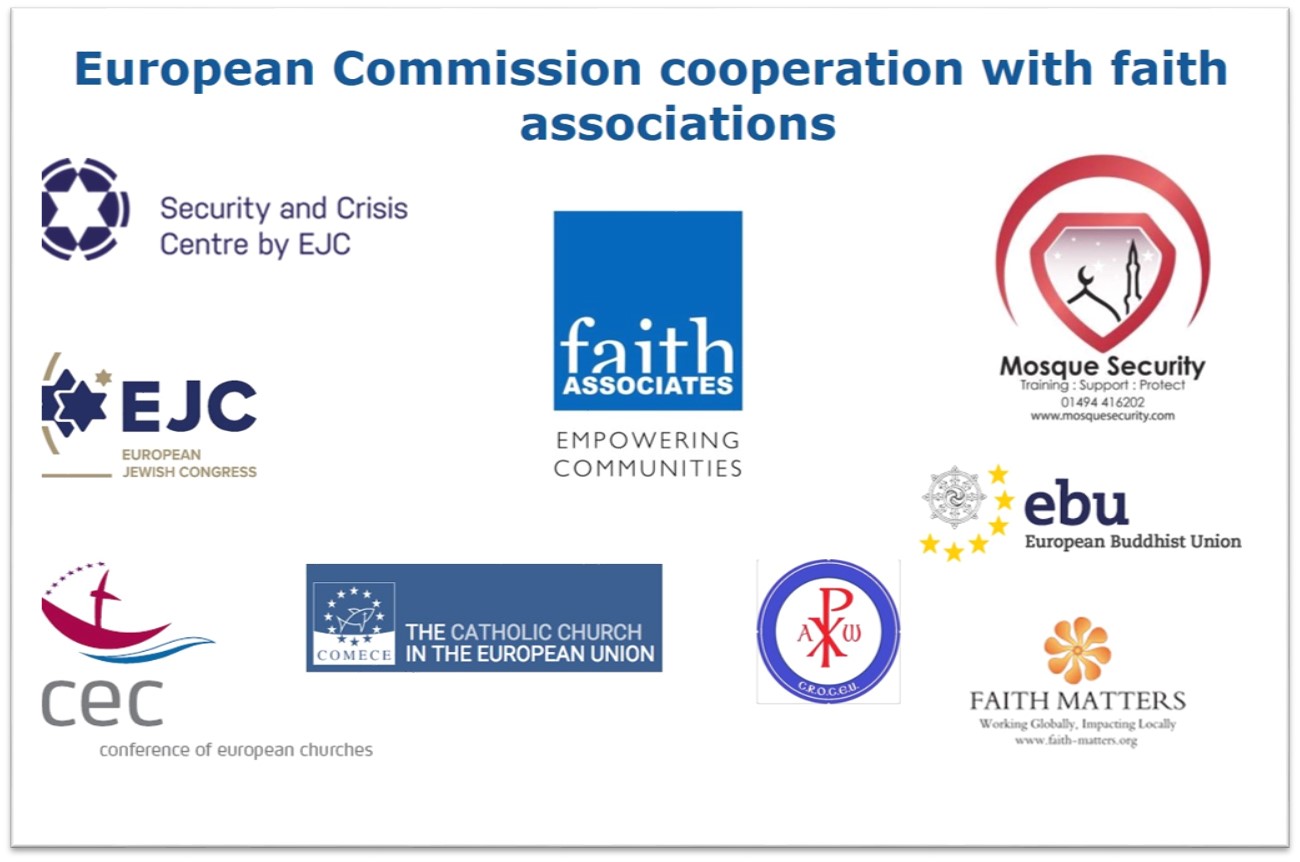 Figure 3: European Commission cooperation with faith associations Figure 3: European Commission cooperation with faith associations
Freedom of religion is an integral part of European values and attacks on places of worship are attacks on our societies and our values. Protecting the communities and places of worship in Europe is protecting our way of life. The European Commission is working on a technical guideline for the protection of places of worship from terrorist attacks. Follow this newsletter to receive updates. In the following issues of this newsletter we will also provide information on projects focusing on the protection of places of worship. References: [1] Article 18 of the Universal Declaration of Human Rights; Article 18 of the International Covenant on Civil and Political Rights. [2] Article 10 (freedom of thought, conscience and religion), Article 21 (non-discrimination) and Article 22 (religious diversity) of the EU Charter of Fundamental Rights, Article 9 of the European Convention on Human Rights [6] Presentation by the Director of Security and Crisis Centre of the European Jewish Congress in the Webinar ‘Protecting Places of Worship in Europe’ held on 5 November 2020 [8] Karlos, V, Larcher, M, Valsamos, G (2018): ‘Guideline: Selecting proper security barrier solutions for public space protection’. JRC Technical Report. https://ec.europa.eu/newsroom/pps/picture.cfm?id=33532&src=0&universe=734 |

|
|
|
|
|
|
Good examples
|

|
|
Action Plan of the Urban Agenda Partnership on Security in Public Spaces
|
|
The Urban Agenda Partnership on Security in Public Spaces has published an Action Plan which puts forward concrete and realistic proposals that will be useful to local and regional authorities, easily understandable by citizens, that address current challenges and will bring about the European added value.
|
|
|

|
|
The Partnership on the Security of public spaces of the Urban Agenda for the European Union, which was set up in 2019 with the aim of strengthening the role of local and regional authorities in European urban security policies and is jointly coordinated by the City of Nice (France), the City of Madrid (Spain), and the European Forum for Urban Security (Efus), has published its Action Plan in November 2020. Resulting from a collaborative process involving, besides the three co-coordinators, 10 partners including European cities and regions and national authorities as well as other participants such as the European Commission and the European Investment Bank (EIB), the Action Plan seeks to “propose actions that are useful to local and regional authorities, realistic, in line with the challenges of our time, easily understandable by citizens and bringing real European added value.” Three priorities and six concrete actions Under the broad objective of “providing concrete European responses to real needs identified at the local level, encouraging the exchange and dissemination of good and innovative practices and allowing better targeting of interventions as far as legislation or funding instruments are concerned,” the Partnership previously defined three priorities: urban planning and design to create safer cities; technology for smart, sustainable and safe cities; managing security and sharing public spaces in urban and peri-urban areas. A practical roadmap for achieving those objectives, the Action Plan contemplates six actions, which correspond to the objectives of better regulation, better funding and better knowledge of the overall Urban Agenda for the EU: - Developing a framework for a self-assessment tool that urban authorities can use to evaluate their local security context (better knowledge)
- Recommendations on the EU’s Security Strategy as well as on multi-level, participatory and innovative governance and funding (better funding and better regulation)
- Evaluating the application and inclusiveness of Artificial Intelligence (AI) technologies (better regulation)
- Developing a capacity-building training scheme for local and regional authorities and their local partners on the different aspects of the holistic, integrated and sustainable approach to urban security (better knowledge)
- Measuring the impact of social cohesion and inclusion on the security in public spaces in urban and peri-urban areas (better knowledge)
- Developing guidance for urban security through spatial design and planning (security by design) (better regulation).
The Partnership is now starting the implementation phase of the six actions and will seek to involve local and regional authorities besides those that are already associated with it. Their participation will be crucial to test and give feedback on the proposed actions in order to identify their strengths and weaknesses and eventually improve them. *The Directors-General on Urban Matters (DGUM) are the central coordinating and decision-making body of the Urban Agenda for the EU. They convene once per presidency (i.e. twice a year). Among other responsibilities, they provide feedback to and ultimately endorsement of the Partnership’s Action Plans. 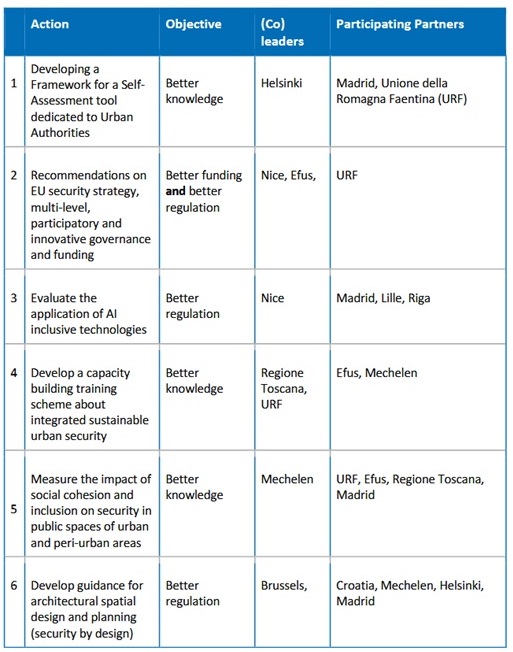
|

|
|

|

|
|
H2020 Project ENTRAP: Enhanced Neutralisation of explosive Threats Reaching Across the Plot
|
|
The H2020 project ENTRAP was successfully completed. Its objective was to support practitioners who protect society from, and respond to, incidents involving improvised-explosive-devices threats by delivering combined operational research methods for the identification and assessment of emerging and future counter-measures. The work has resulted in a number of deliverable available for use by practitioners.
|
|
|

|
|
The ENTRAP project is an H2020 funded project coordinated by FOI - the Swedish Defence Research Agency and consorting 16 organizations involved in the research of security of explosives. It ran from 1 May 2017 until 31 October 2020. Here we summarize the main unclassified outcomes of the project. Project objectivesThe objective of the ENTRAP project was to support practitioners that protect society from, and respond to, incidents involving IED threats by delivering combined operational research (OR) methods for assessing and identifying emerging and future counter-measures. ENTRAP aimed to create step-change for the development and deployment of new IED prevention tools and techniques. Strategies for impartial assessments of existing and emerging counter-tools different in different IED related scenarios were developed. Structure and frameworkThe project came up with a method to structure terrorist plot scenarios which involve the use of IEDs by assessing selected historical plots and emerging explosive threats. 
Capabilities required to counter these plots were divided into four capability domains: Prevent, Detect, React, and Mitigate. A detailed capability hierarchy was developed to identify and structure counter-terrorism capabilities. 
Information on more than 450 existing and emerging counter-tools was compiled and collected in a database, which was connected to the capability hierarchy, so that it supports further assessment. Effectiveness assessmentsThe effectiveness existing or emerging counter-tools depends on the attack scenario. In ENTRAP, the assessments were based on operational research methods and the effectiveness was evaluated in iterative actions with increasing level of detail and focus. One assessment method uses evaluation through serious gaming. For the game, a Red team (‘Terrorists’) and a Blue team (‘Counter-terrorism officials’) were set up and actions and counter-actions, including the use of counter-tools, were simulated. The results were analysed for their effectiveness as well as for the efficient and realistic use of resources and capabilities. 
Gap analysisThe existing gaps in the system were identified and prioritized based on the effectiveness assessments and the structured blue side-red side confrontation setting with a range of IED attack scenarios. The prioritized gaps, needs and opportunities for improvement were subjected to analysis how they can be addressed through future research and development. Cost assessmentA cost analysis exercise helped identify the most cost-effective counter-tools. The cost analysis was based on a quantitative method using available actual cost figures and a qualitative method through expert judgement. Ethical and legal considerationsAn ethical impact assessment raised the awareness among the operational decision makers and end-users on the need of compliance of emerging counter-tools with the European legal framework. Recommendations for future researchThrough the assessments and the gap analysis, the ENTRAP project identified future security research needs with the aim to strengthen the future societal preparedness to counter explosive threats. The final workshop report can be found here
|

|
|

|

|
|
Launch of the SECU4ALL project on the protection of public spaces
|
|
The project aims to strengthen the capabilities of local and regional authorities in ensuring the security of public spaces and the protection of soft targets (for example, sport venues, shopping malls, schools or transport systems) against potential risks.
|
|
|

|
|
The Secu4All project aims to strengthen the capabilities of local and regional authorities in ensuring the protection of public spaces against potential risks. Funded by the Internal Security Fund of the European Commission and led by the European Forum for Urban Security (Efus), the Secu4All project gathers a consortium of local and regional authorities, research universities, think tanks, as well as a network of private security actors*. The two-year long project will provide training to local and regional authorities in five areas: - methods and tools to assess the vulnerability of local public spaces;
- with relevant stakeholders in case of crisis (before, during and after);
- innovative technologies to reinforce the protection of public spaces and the ethical use of such technologies and the data they help collect;
- reducing of citizens' feelings of insecurity by means of Crime Prevention Through Environmental Design (CPTED);
- of inspiring practices and lessons learned with other local and regional authorities.
A complex challenge for local and regional authoritiesPublic spaces are places of socialization, culture, commerce, leisure and political expression –centrepieces of urbanity open and inclusive by definition. But public spaces can become hotbeds of delinquency and incivilities and worse - prime targets for terrorist attacks, as has happened throughout Europe over the past decade. For local and regional authorities managing the local public spaces is one of the most visible actions in the eyes of local citizens: it is where their vision of society is best embodied and enacted. Ensuring that such spaces are inclusive and open, but also safe and secure is a complex challenge for local and regional authorities, who are among the first in line to respond when a crisis occurs. Cooperating with all local stakeholdersExperience has shown that it is essential for local and regional authorities to cooperate with a broad range of local stakeholders from both the public and private sector in this endeavour: urban planning, first respondents, transport and mobility services, event organisers, local businesses, and, crucially, relevant national and European authorities. However, in order to establish this collaboration, local and regional authorities need adequate knowledge and tools. Secu4All addresses this need. The project will develop training content providing local authorities with theoretical and practical knowledge with which they can improve their local prevention actions or programmes to safeguard their public spaces against risks. * DITSS (Netherlands) Dsp-groep Bv-DSP (Netherlands), KEMEA (Greece), the CRIMINA centre of the Miguel Hernandez University in Elche (Spain), the European Organisation for Security-EOS (Belgium) / Bruxelles - Prévention & Sécurité (Belgium), DEFUS (Germany), FFSU (France), FISU (Italy), The Hague (Netherlands), Riga Municipal Police (Latvia), Xábia (Spain).
|

|
|
|
|
|
|
Upcoming events
|

|
|
EFUS Webconference – Use of drones in cities to mitigate petty crime
|

|
 |
 |
|
Date |
|
22/01/2021
|
|
 |
 |
|
Organiser |
|
European Forum for Urban Security
|
|
|
|
|
|
|

|

|
|
PRoTECT Web conference 1: Vulnerability assessment of a potential target : How can local authorities make informed decisions on the necessary security provisions for public spaces?
|

|
 |
 |
|
Date |
|
17/02/2021
|
|
|
|
|
|
|
|
|

|

|
|
PRoTECT Web conference 2: What considerations should cities take into account when considering the adoption of technologies to protect public spaces?
|

|
 |
 |
|
Date |
|
17/03/2021
|
|
|
|
|
|
|
|
|

|

|
|
PRoTECT Web conference 3: How can technology protect public spaces and soft urban targets?
|

|
 |
 |
|
Date |
|
28/04/2021
|
|
|
|
|
|
|
|
|
|
|
|
|
Publications
|

|
|
EU Guidance on Operating Procedures for Explosive Detection Dogs in Public Spaces
|
|
The Guidance is a collection of best practices. It identifies the key guiding principles that any explosive detection dog team should observe during operational deployments. The aim of the document is to offer Member States public authorities and private operators with advice on how to most effectively use explosive detection dogs during different search missions in different work environments.
|
|
|

|
|
Explosive detection dogs play an important role in detecting explosive threats due to the speed and flexibility they can deliver in dynamic environments (sport events, transport hubs, shopping malls etc). Their detection performance is impacted by a number of other issues such as training of the dog and handler, search methodology, working environment and explosive concealment. 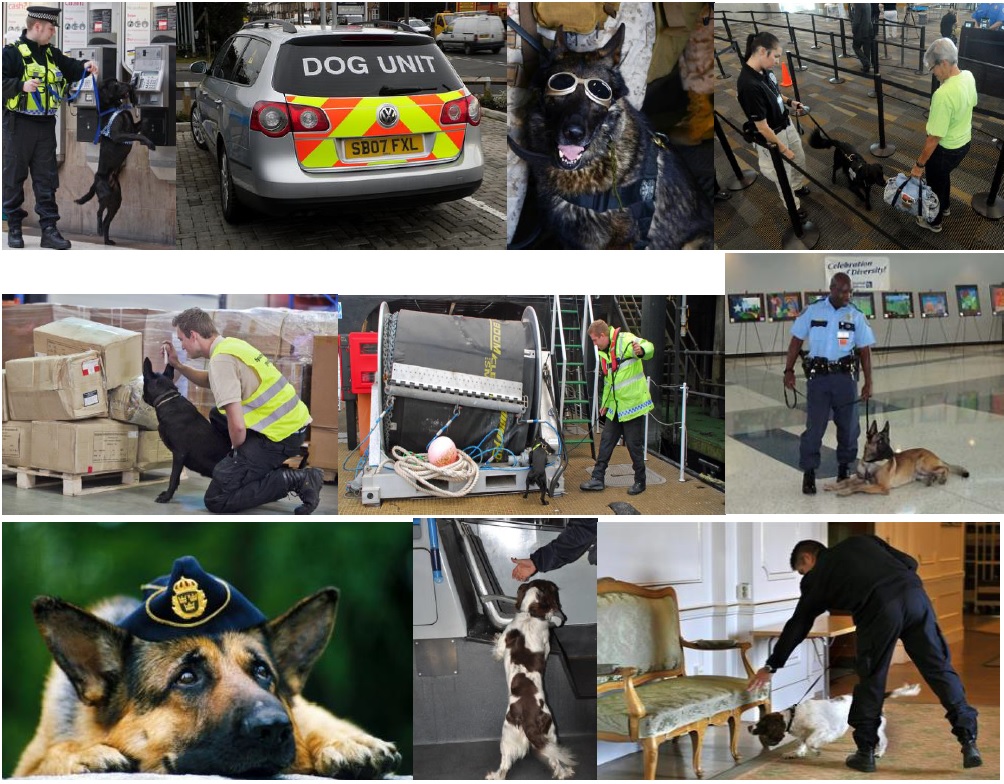
The EU Guidance on Operating Procedures for Explosive Detection Dogs in Public Spaces is a collection of best practices. It identifies the key guiding principles that any explosive detection dog team should observe during operational deployments. The aim of the document is to offer Member States public authorities (law enforcement, customs, military) and private operators with advice on how to most effectively use explosive detection dogs during different search missions in different work environments (public buildings, cultural sport events, transport hubs, maritime objects etc). The Guideline can be found here
|

|
|
|
This newsletter is published under the initiative of DG HOME and JRC.
If you would like to share news, events or to contribute with an article, please contact us at HOME-D2-TERRORISM@ec.europa.eu or JRC-PUBLIC-SPACES@ec.europa.eu
If this newsletter was forwarded to you and you are interested to receive it directly you can subscribe here.
You may unsubscribe from this newsletter by going to your profile or by contacting us at this address: JRC-PUBLIC-SPACES@ec.europa.eu
Catalogue Number KJ-BG-19-001-EN-N (online)
|
The European Commission is committed to personal data protection. Any personal data is processed in line with the Regulation (EU) 2018/1725. Please read the privacy statement
|
|

|
|